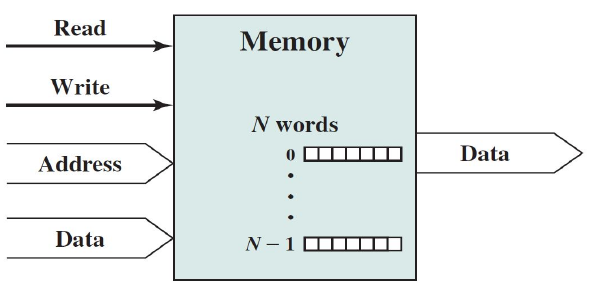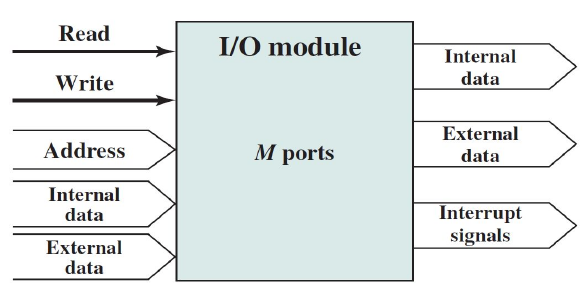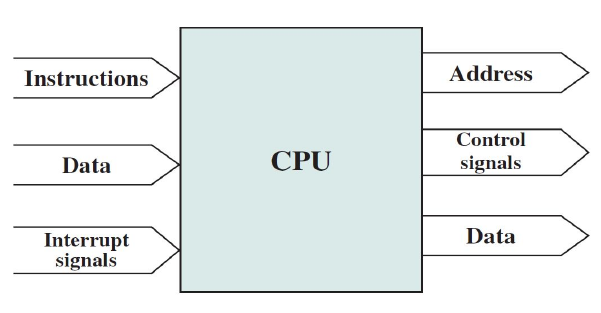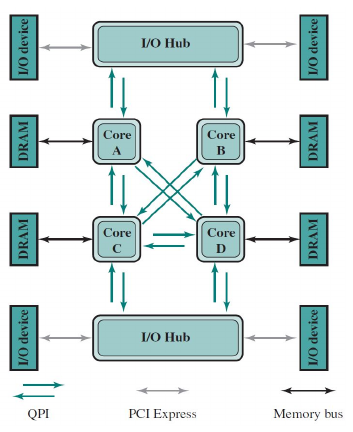4. Interconnections #
- A computer is a network of basic modules
- There needs to be parts for connecting the modules
- The structure of these depends on the exchanges
Memory:
- N words equal length
- Unique numerical address
- Read/write data word
- Operating is indicatred by read and write control signals
- The location for the operation is specified by an address

I/O Module:
- Similar to Memory (internal point of view): read/write
- Control more than one external device (port - unique address)
- External data path (input/output) with an external device
- Interrupt signals

Processor:
- Reading instruction and data
- Write out data after processing
- Use control signals to control the overall operations
- Receive interrupt signals

Types of Transfers #
- Memory to Procesor: The processor reads an instruction or a unit of data from memory
- Processor to Memory: The processor writes a unit of data to memory
- I/O to Processor: The processor reads data from an I/O device via an I/O module
- Processor to I/O: The processor sends data to the I/O device
- I/O to or from Memory: I/O module is allowed to exchange data directly with memory, without going through the processor, using direct memory access
Types of Interconnections #
Bus #
- Communication pathway connecting two or more devices
- Key characteristics: shared transmission medium
- Multiple devices connect to the bus, and a signal transmitted by any one device can be received by all other devices attached to the bus
- Signal overlap and become garble - only one device at a time can successfully transmit
- A bus consists of multiple communication pathways, lines - each transmit signals representing binary 0 or 1 (e.g. 8-bit unit transmits over 8 bus lines)
- Example: System Bus
Bus Functional Groups #

- Data Lines:
- Moving data
- Data bus
- Bus Width - Number of lines
- Data bus width - Key factor in determining overall system performance
- Address Lines:
- Source/destination of the data on data bus - Address Bus
- Bus width - Determines the maximum possible memory capacity
- Address I/O ports
- Higher order bits - select module
- Lower order bits - memory location or I/O port
- Control Lines:
- Controls the access and the use of the data and the address bus
- Control signals:
- Command signals: Specifies the operation to be performed
- Timing signals: Validity of data and address information
Bus Operation #
If one module wants to send data to another module, it must:
- Obtain the use of the bus
- Transfer the data via the bus
If one module wants to request data from another module, it must:
- Obtain the use of the bus
- Transfer a request to the other module over the appropriate control and address lines
Point-to-Point Interconnection #
- Contemporary systems increasingly rely on Point-to-Point interconnection
- Bus system problem
- Lower latency, higher data rate, better scalability
- QuickPath Interconnect (QPI - 2008):
- Multiple Direct Connections
- Layered Protocol Architecture
- Packetised Data Transfer
